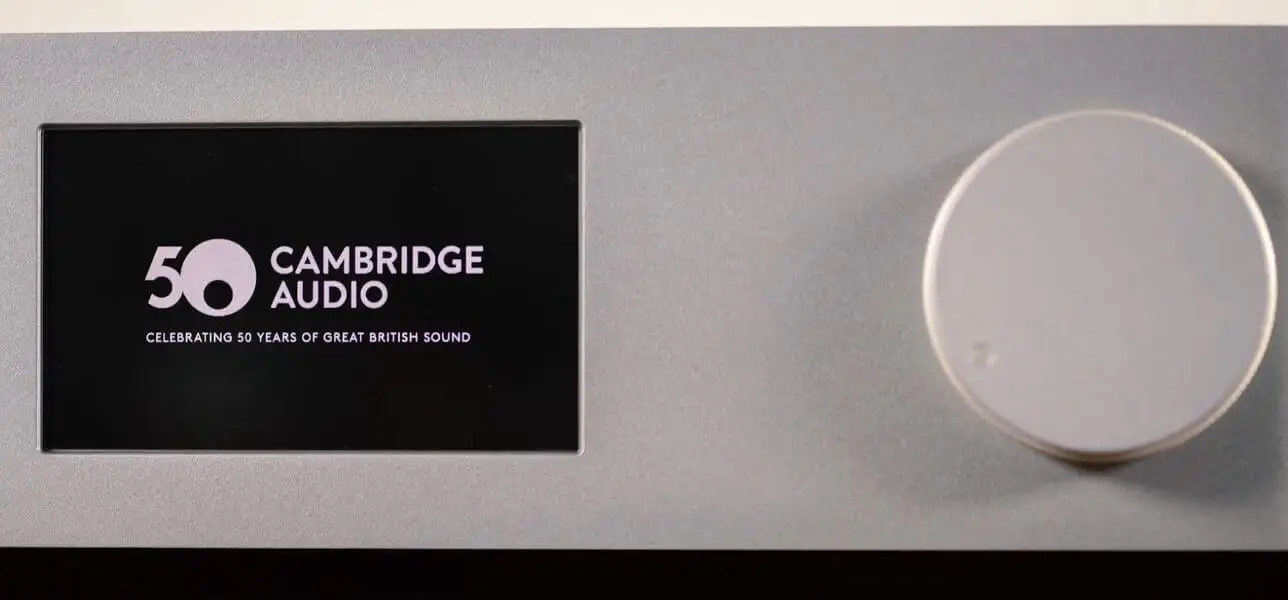Cambridge Audio Edge NQ Review
Cambridge Audio was already successful with their streamers for a considerable time. To celebrate the 50th year of existence, they commissioned the development team to build a cost no object product line with the Edge NQ, a streaming preamp, and DAC.
The Edge-series comprises three products, the Edge A integrated amplifier, the Edge NQ preamp streamer, DAC, our review here, and the Edge W power amplifier.
The build quality is very high as far as I can see from the outside, and you can see a toroidal transformer that is larger than to be expected in a preamp and DAC. The Edge NQ must be connected to a power amp that drives a set of loudspeakers unless you use active speaker speakers with built-in amplifiers. The line outputs of the Edge NQ are connected directly to the speakers.
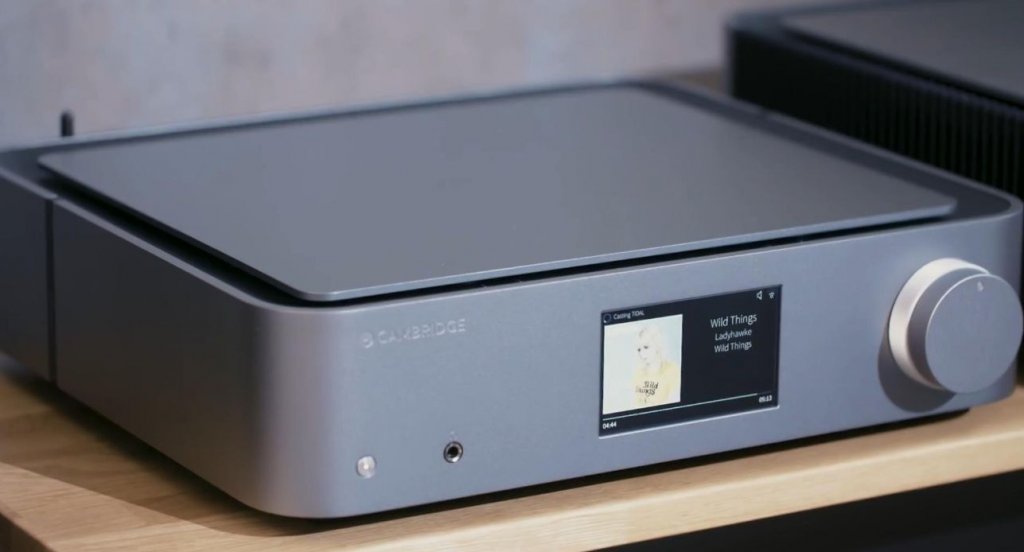
The Front
the Cambridge Audio Edge NQ has a remarkable appearance with its rounded corners and massive duo concentric knob. It measures 60 by 120 by 405 millimeters and weighs 10.2 kilos.
On the left, we find the standby button, a 6.3-millimeter headphone jack, the 5-inch color display, and the dual concentric rotary knob. The front one is the volume control with behind it the input selector. These functions can be operated from the infrared remote control too. It also has four buttons to select, one of four presets. More presets can be set in the app.
The Rear
Along the top, we have the digital input starting with a USB B socket that accepts either USB audio class 1 or 2. Class 1 is for the older equipment and is limited to 96 kilohertz, while class 2 is the current standard that in the Edge NQ goes up to 384-kilohertz sampling. Selecting between class 1 and 2 is done by going to a browser and typing the IP address of the Edge NQ. Here several settings can be done, including the USB mode. The next input is an HDMI EARC input. When connected to the corresponding HDMI port on your TV, you can not only play your TV’s sound on the stereo. You can even control the volume of the Cambridge Audio Edge NQ using the TV remote.
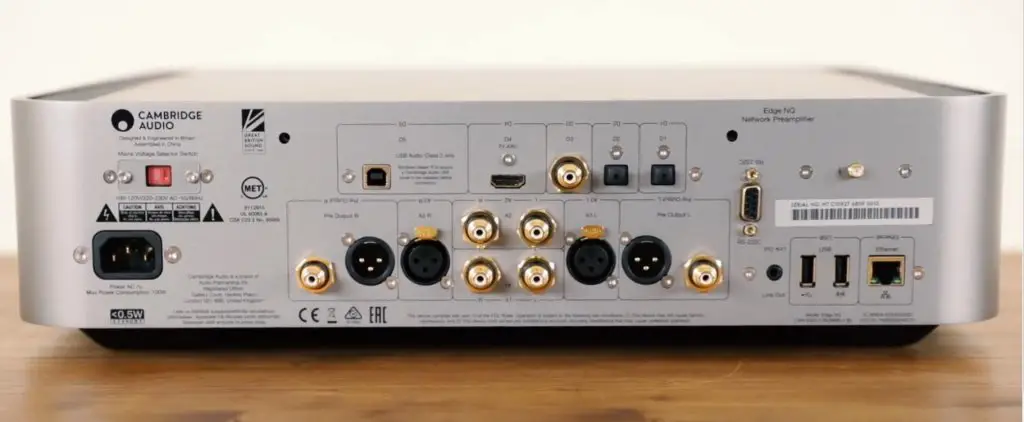
Next, we see a SPDIF and two optical Toslink digital inputs for connecting to digital sources. There are three analog stereo inputs, two sets of single-ended inputs an RCA, one set of balanced inputs on XLR, a set of balanced outputs on XLR, and a single-ended output set from RCA. You use either of those to connect to the power amp. A trigger connector lets you control the standby mode of the power amp. There are 2 USB B sockets for storage media, a network socket, and antenna terminals to supply an antenna and an RS-232 connector for home control systems.
Connections
A CD player can be connected using either an analog or digital connection. A TV might be connected using the Audio Return Channel on one of the TV’s HDMI connectors. All the TV’s can be connected using Toslink optical cable or an analog connection using RCA connectors. Other sources like, for instance, a game console can be connected either digitally or analog. There are wireless options like Bluetooth between the Edge NQ and, for example, a tablet smartphone or computer. The sound quality of a Bluetooth connection is somewhat lower since it uses the aptx protocol.
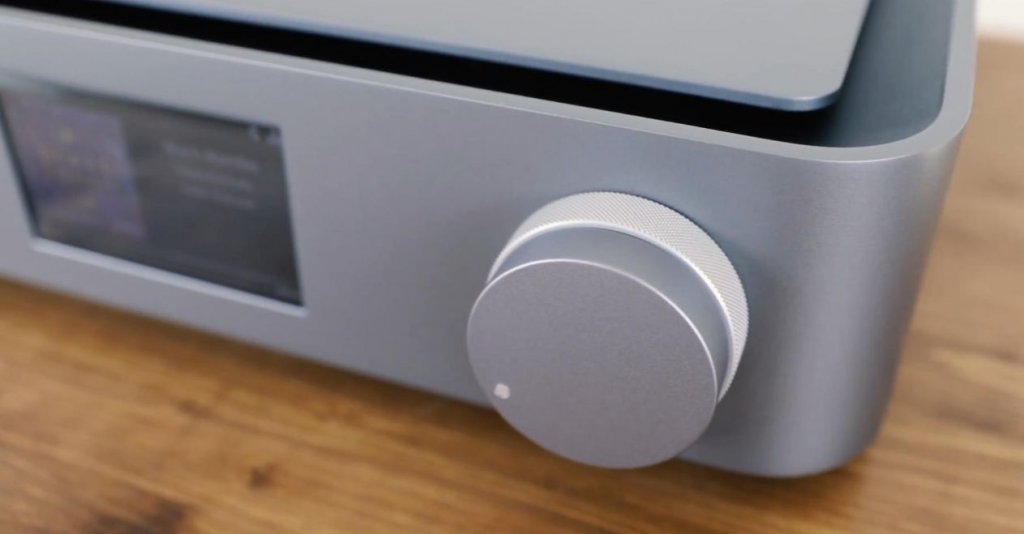
Edge NQ’s streaming functions need a connection over your home network to the internet, which can either be a network cable or a Wi-Fi connection. Using a computer smartphone or tablet connected via Wi-Fi to your router, you can stream music using either Chromecast or airplay. Chromecast is limited to 96-kilohertz sampling, while airplay is limited to 48 kilohertz. This way, you can also play Spotify Connect. Playing music from a NAS or computer is done using the DLNA protocol. The computer needs to run a server program. The DLNA server is controlled by the Edge app on a tablet or smartphone. Android and iOS are both supported and then sends music files to the Edge NQ to render.
The Inside
Opening the top lid, the first thing to notice is the relatively large toroidal transformer that feeds the power supply board. Further voltage stabilization is done locally at many places on the circuit board. This way, the designers made sure the noise level is low while the digital circuits are delivered current fast. A second board is primarily to interface the other boards like the Stream Magic board in the Black Marlin incarnation. This essentially is a small board computer that runs the streaming functions. This nowadays common approach has been the backbone of Cambridge Audio’s streaming technology for years now. Behind this module, there is a circuit board that is mostly covered by the panel above it. The function of this board is interfacing with audio.
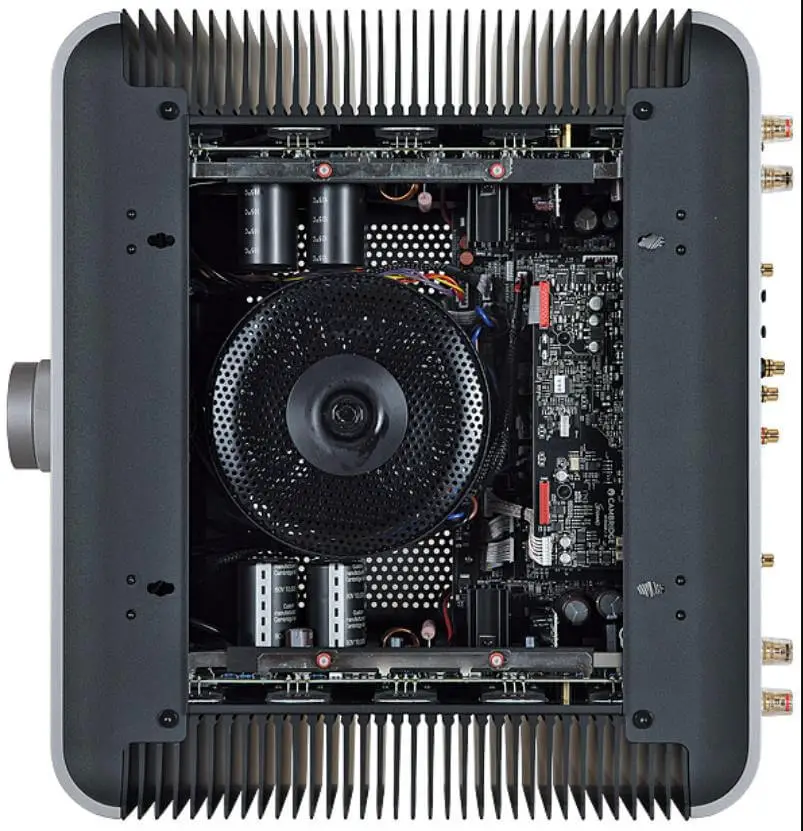
Let’s expose the board a bit more, and let’s start with the XMOS USB receiver and the Wolfson SPDIF receiver. Then the DAC chip, the ESS Sabre ES9018K2M, the reference version. I know there are already two newer versions, the 9028 and 9038, but please be aware that a fundamental ‘portable’ performance is usually used. I had the chance to compare the 9018 with the 9028, and the difference is minus while it is not sure this is due to sound quality differences caused by the DAC chips.
I have told you before that the way the filtering is done, the circuit board design, the clock crystals used, the power supply, and so on have far more influence on the sound quality. And of course, the analog part, here taken care of by superior Texas Instruments OPA 2376 operational amplifiers. Another detail: the galvanic separation between the digital circuits and the analog circuits in the shape of a bidirectional I2C isolator. I2C stands for Inter IC and is the common protocol used to have chips talk to each other. It is more or less the brother of I2S. Another excellent detail is the volume control. This is a very sturdy, motor-driven potentiometer. The designers were allowed to spend money, so much is clear.
Sound Quality
I know Cambridge Audio as a company that can design and voice their equipment to the best that’s possible given the price, especially with digital equipment. The Edge is straightforwardly coupled and upsamples all incoming signals to eight times the base frequency. That makes the analog reconstruction filters a lot easier since a far less steep filter is needed. But then the upsampling algorithms need to do their work with finesse.
The Edge NQ fully lives up to the expectations. Stereo imaging is about the same as it is to focus. The Edge NQ has a very natural pace, and rhythm can lead to effortless listening while up sample track sounds alert and urgent.

The sound quality presented is very moving, transparent and pure, and impressive. It is not an exaggeration to say that you can feel the texture and texture of the sound. The instruments’ organization and coordination are excellent, and there is enough space to breathe and express yourself.
Low-frequency response is also the strength of Cambridge. The whole presentation is very balanced, and the treble is sufficient, but Edge NQ’s low frequency is not inferior. Its sound is rich in detail, full of rhythm and beautiful tune. Besides, the mid-range of Edge NQ is thick and sweet. With the perfect combination of richly detailed tones and impressive scales, the sound quality is beyond criticism. As a result, those high-pitched and richer tones have more room to play.
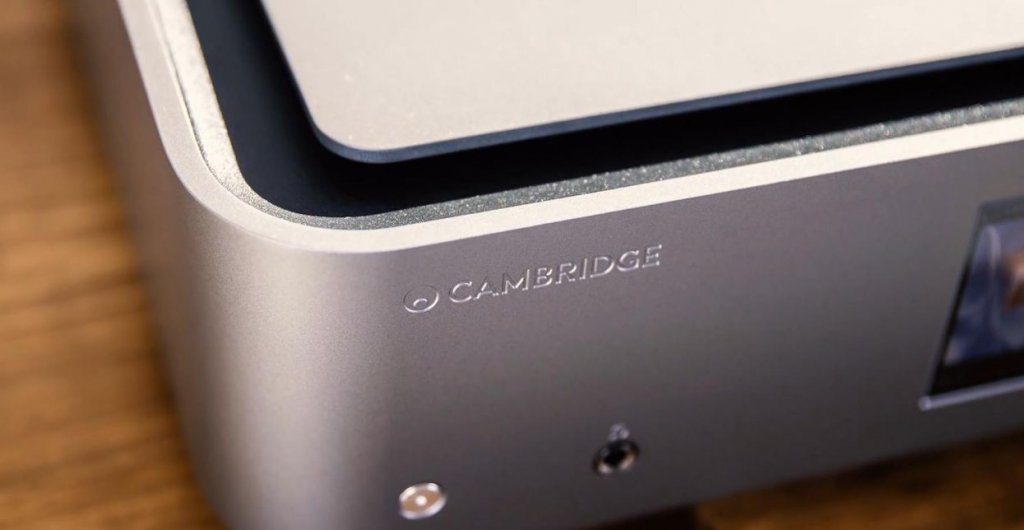
In streaming music, time is an inherent problem, but Cambridge has no pressure in this regard. There is a strong sense of musical rhythm in all the input, and the overall performance is much more colorful.
Again, this is due to the wide dynamic range. The abundant energy of Edge NQ can not only easily handle smooth tunes, but also demonstrate the climax of the music very well. This musicality can only be the product of long-term listening tests, and it can match the work invested in unit design and construction.
Conclusion
Cambridge Audio intended to make a premium product, and they succeeded. The Edge NQ looks like a product of multiple times the price. The Edge NQ is an impressive device, both physical and sound-wise. It’s elegant yet present. It’s easy to operate, yes, versatile. The advantage of contemporary products is that firmware updates can add functionality. The same goes for the infrared remote.
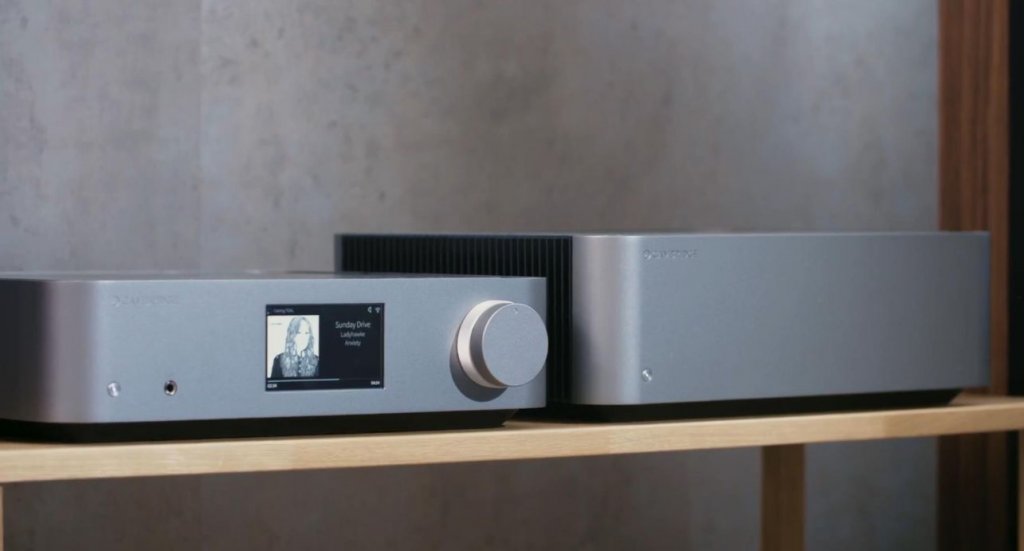
The app for iOS is functional and works fine but lacks the luxury feel and might need a better graphic design. All popular quality streaming protocols are supported. The Edge NQ is a breeze to operate and looks great. The big concentric volume control knob on input select ever feel you won’t even find in premium German cars. I loved the Edge NQ right from the start, and it should be your perfect choice for buying a network streamer and pre-amp all-in-one device.
